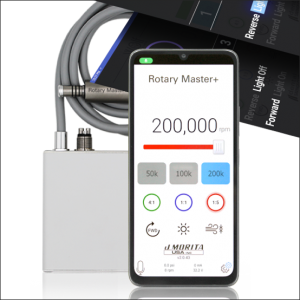
Bioactive ceramic VS calcium hydroxide: which is the best material for pulpotomy?
Simona Chirico
When we have to effort an incisor fracture that involves enamel, dentin and pulp, our goal is to preserve the pulp, when it is possible. To do this, we have different clinical options: direct pulp capping and pulpotomy.
As we can see in scientific literature, direct pulp capping has a success rate between 43% and 85%; instead of pulpotomy which has a success rate between 79% and 100% (**).
Considering only pulpotomy, there are several materials that we can use to do it, such as: calcium hydroxide (CH) and mineral trioxide aggregate (MTA). Calcium hydroxide (CH) has an antimicrobial activity and simulation of hard tissue formation, but it has got high solubility, poor sealing ability and lack of adhesion. Mineral trioxide aggregate (MTA) has good sealing ability and biocompatibility, but it has discoloration, a long setting time, and high costs.
In these last years, another material has proposed to be used: calcium silicate– based bioactive ceramic, which has excellent biological properties, sealing ability, and antibacterial activity and can stimulate the formation of a thick layer of dentin bridge. Unitl now, none discoloration problems has been reported.
So, If we want to compare bioactive ceramic and calcium hydroxide, which is the best pulpotomy material? Rao et al. in their retrospective study, published on Journal of Endodontics, try to answer to this question.
Materials and Methods:
This research included 205 permanent incisors with complicated crown fractures. These teeth were treated with pulpotomy and divided into 2 groups according to the pulpotomy material:
- BC group: 105 incisor treated with iRoot BP Plus (calcium silicate-based bioactive ceramic;
- CH group: 100 incisor treated with calcium hydroxide.
- Clinical and radiographic information was collected during the 12- to 24-month follow-up period.
The formation of reparative dentin bridges and pulp canal obliteration were analyzed using radiographs in both groups.
Results
The success rates for pulpotomy treatment were: 99% in bioactive ceramic (BC) group; 93% in calcium hydroxide (CH) group.
Reparative dentin bridges were observed in: 92.4% of the bioactive ceramic (BP) group; 90% of the calcium hydroxide (CH) group.
Pulp canal obliteration was observed in 2% in each group.
Conclusions
As we can see in this retrospective study, bioactive ceramic group obtains better results than the calcium hydroxide group. So bioactive ceramic is a valid alternative to calcium hydroxide as a pulpotomy material.
(**) References:
Pulp prognosis following conservative pulp treatment in teeth with complicated crown fractures-a retrospective study. Dent Traumatol 2017;33:255–60.
Review of the success of pulp exposure treatment of cariously and traumatically exposed pulps in immature permanent incisors and molars. Stomatologija 2012;14:71–80
For additional information: Comparison of iRoot BP Plus and Calcium Hydroxide as Pulpotomy Materials in Permanent Incisors with Complicated Crown Fractures: A Retrospective Study
 Related articles
Related articles
In 2004, a new technique was introduced for the treatment of non-vital immature teeth, termed a regenerative endodontic procedure, which allows for continued root maturation in both length and...
Endodontics 25 May 2023
Pulpotomy versus root canal therapy in mature teeth with irreversible pulpitis
Vital pulp therapy is increasingly practiced as an alternative treatment to root canal therapy in teeth with carious pulp exposure. The aim of this study was to compare the outcome, quality of life...
Pediatric dentistry 04 May 2022
The evaluation of MTA and Biodentine as a pulpotomy materials for carious exposure in primary teeth
The aim of the present study was to compare the long term clinical and radiographic success rates of Biodentine and MTA pulpotomies, performed on primary teeth...
 Read more
Read more
Oral pathology 25 November 2025
Virtual microscopy (VM) is a technology for showing microscope slides using computers and could be considered a progression of classic methodology using optical microscopes.
For every assist this season, the insurance provider will donate $25 to TUSDM Cares for Veterans
Products 25 November 2025
J. MORITA USA, a world leader in handpiece technology, has announced the Rotary Master+ Electric Motor. Compatible with Morita TorqTech electric attachments and most competing electric handpieces on...
News 25 November 2025
Let’s be honest: nothing kills the vibe quite like bad breath. However, while 85% of people prefer for someone to tell them if their breath needs some freshening up, only 15% are willing to break...
News 25 November 2025
Vitana Pediatric & Orthodontic Partners (Vitana), a dentist-led dental partnership organization (DPO) focused exclusively on elite pediatric dental and orthodontic practices with operations in...













